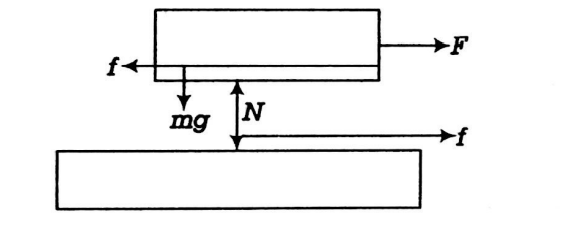Q.
A large slab of mass $5\, kg$ lies on a smooth horizontal surface, with a block of mass $4\, kg$ lying on the top of it, the coefficient of friction between the block and the slab is $0.25$. If the block is pulled horizontally by a force of $F=6 N$, the work done by the force of friction on the slab between the instants $t=2 s$ and $t=3 s$ is
ManipalManipal 2015
Solution:
